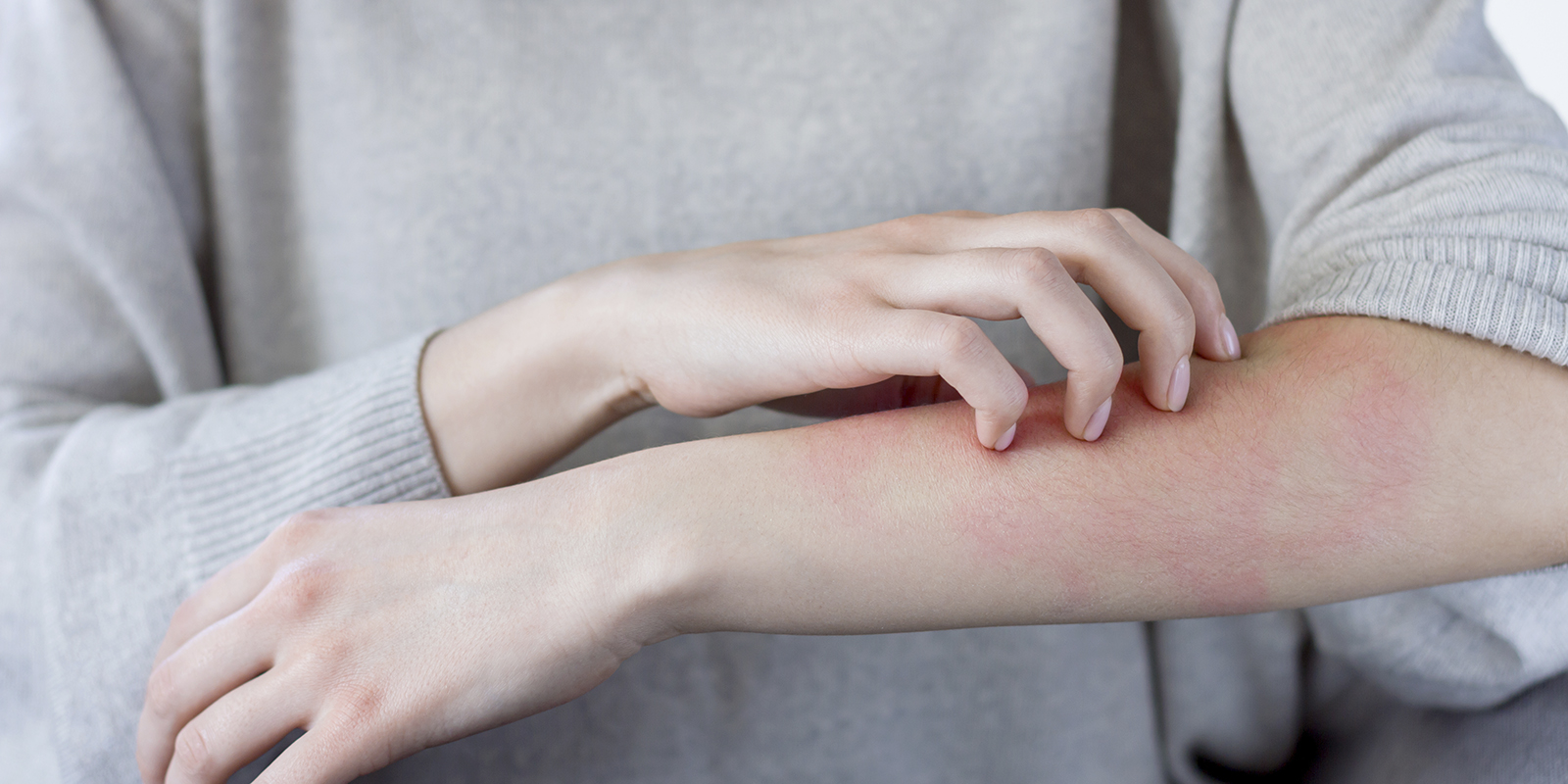Discover the specifics of the seven main types of eczema, exploring their unique symptoms, underlying causes, and effective treatment options.
Normal, dry to atopic skin
Reading time : 5 min

Discover the specifics of the seven main types of eczema, exploring their unique symptoms, underlying causes, and effective treatment options.
Eczema is a common skin condition responsible for intense itching, scaling, redness and fluid-filled blisters. There are seven types of eczema with their own symptoms, triggers and treatments. Each person can experience eczema differently depending on its cause and symptoms. It is also possible to have more than one type of eczema on your body at the same time. Eczema concerned more than 31 million people (about the population of California) in the US.
Contact dermatitis include two subtypes of eczema:
Irritant eczema
Allergic eczema
Whether you have irritant or allergic dermatitis, the symptoms are the same and you will see the appearance of red patches with an itching and burning feeling. These skin lesions may ooze or become scaly. Their appearance takes place shortly after contact with an irritant or allergen.
The cause for irritant eczema is the contact with an irritant like detergents and solvents.
The cause for allergic eczema is an allergic reaction to substances like nickel, cosmetics and fragrances.
For either type of contact dermatitis, the treatment consists in avoidance of known allergens or irritants, topical steroids to reduce inflammation and cool compresses to soothe irritation.
Discover more about contact dermatitis
Dyshidrotic eczema is a chronic skin condition which causes small, itchy blisters on the edges of the fingers, toes, palms, and soles of the feet. Very painful, this type of eczema may lead to severe itching and scaly patches.
The causes of dyshidrotic eczema are unknown, but research led us to think that genetics, stress, allergies, excessive sweating and exposure to substances such as nickel can trigger the condition.
There is no cure for dyshidrotic eczema, but effective treatment can include prescription medication like high-potency topical steroids.
Moisturizing with emollients each day will help reinforce the skin’s barrier protection.
Find out more on our dedicated article about dyshidrotic eczema
Neurodermatitis is a chronic skin condition characterized by thick and scaly patches of skin and severe itching that may be confined to specific areas. The areas commonly affected include the neck, wrists, forearms, thighs, ankles and scalp. The anal and genitals might also be affected.
The exact causes of neurodermatitis are unknown but it seems to be linked to nerve abnormalities and excessive response to minor irritations. Intense itching can lead to significant stress and anxiety. Patients can find themselves scratching without even realizing it.
The treatments require topical corticosteroids to reduce itching and inflammation, capsaicin cream to decrease itching, and compresses to protect the skin.
Read our detailed article about neurodermatitis
Nummular eczema affects men and women differently. Men are more likely to develop the condition, and their first outbreak usually happens before mid 50s whereas women may develop the condition during their teenager years.
Nummular eczema causes coin-shaped red spots on the legs, backs on the hands, forearms, lower back and hips. These spots can be itchy and weepy.
Nummular eczema is a long-term skin condition whose causes are unknown but can be associated with skin injuries (like an insect bite), dry skin, or allergic reactions.
The treatments can help ease your symptoms, restore the natural skin barrier and clear or prevent any infection. To prevent flare-ups, remember to moisturize every day.
Apply topical steroids and use antihistamines to manage itching.
Learn how to manage nummular eczema
Seborrheic dermatitis is a common skin condition that affects your scalp with red, oily, scaly patches.
The exact cause of seborrheic dermatitis is unknown, but a type of yeast called Malassezia that is part of the normal skin flora seems to be responsible for seborrheic dermatitis. Also, an irregular immune response, stress, and seasonal changes are considered risk factors for seborrheic dermatitis.
Antifungal treatments, medicated shampoos for the scalp, and topical steroids for inflammation are part of the treatments.
Learn more about seborrheic dermatitis
Eczema symptoms make your skin itchy, dry and sensitive. To relieve the symptoms and limit flare-ups there are general tips you can follow, and which can apply to all types of eczema.
Maintain a consistent skincare routine
Moisturize every day and several times a day
Choose fragrance-free skin care products
Identify and avoid triggers
Take short baths or showers with lukewarm water
Protect your skin from extreme temperatures
Avoid scratching
Learn how to manage and reduce stress
Wear loose-fitting clothing made of soft and breathable fabric
Seek regular medical advice to adjust treatments as necessary
Eczema is a chronic condition requiring specific treatments and management strategies. Always remember to seek medical advice to find the best treatment for your condition and to improve your quality of life.